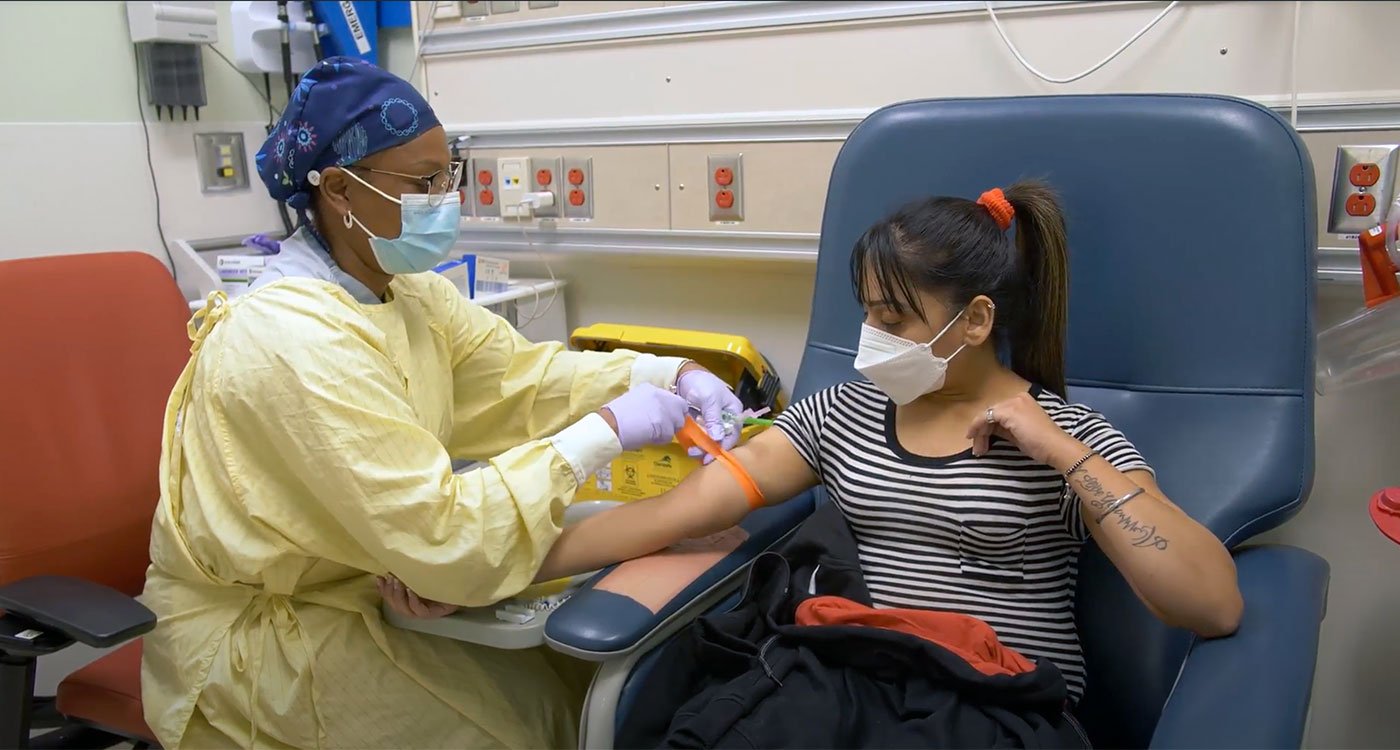
It has been a challenging two and a half years for hospitals everywhere, including Osler. Yet through it all – through every wave of the pandemic and all the changes and uncertainty that came with it – our commitment to people-centred care has remained steadfast.
Osler is seeing the impact of that commitment reflected in the voices of many of our patients and their families who tell us they feel genuinely cared for, safe and well-prepared to manage their condition when they leave the hospital.
In this special Q & A, Mary Jane McNally, Osler’s Chief Patient Experience Officer, shares her insights on the patient experience at Osler, where we are focusing next, and more.
In your own words, what does patient experience mean to Osler?
Patient experience is really about being people-centred. A commitment to people-centred care is foundational to an exceptional patient experience. It’s about all of us connecting our hearts and minds – being purposeful, generating respectful partnerships and investing in providing reliable and evidence-based care. It’s about creating a trusted health care system organized around the needs of the patient, their family and the health care provider.
How do we measure the patient experience at Osler?
At Osler, we talk to patients by phone after they leave the hospital, which is highly-unique within the province. Every year, we reach out to approximately 24,000 patients about their experience at the hospital using a set of customized questions related to empathy, safety, patient confidence, patients’ involvement in care, and patients having enough information when they leave the hospital.
The team that makes these calls say that patients really appreciate and feel cared for by us reaching out and asking for their feedback; that it fosters a sense of partnership and a personal connection with Osler.
What we learn from these calls is then shared with staff, physicians and volunteers and in various leadership meetings so we can recognize excellence and/or leverage patient wisdom to promote meaningful changes or improvements.
What type of feedback has Osler received from patients over the last year?
When asked: ‘Did you feel staff were genuinely concerned about you?’ 79 per cent of patients said: Yes, definitely. It wasn’t a maybe, but a, ‘yes, definitely, all the time, I felt a sense of being cared for by the provider.’ There was a sense of ‘I matter, I’m visible and I’m being noticed’ in a way that is genuine, authentic and caring.
We also scored above target on the question: ‘Did you receive enough information from hospital staff about what to do if you were worried about your condition or treatment after you left the hospital?’ I think the fact that more and more patients are feeling more confident in managing their own health condition is amazing, particularly as we work towards a more integrated health system.
Nowadays there is much more clarity about the role that hospitals have in encouraging patient empowerment. Patients need access to their own health information and education to live their lives fully in their own home and community. Digital tools like MyChart, Pocket Health, Seamless MD, and patient oriented discharge summaries are all examples of how technology enables the future of shared decision-making and provider-patient partnership.
Specifically, what were some of the initiatives that you think contributed to our positive patient experience results?
That’s a great question. There are a myriad of different initiatives which support a deep-seated commitment by everyone to deliver an exemplary patient experience and to explore all opportunities to ensure a consistent people-centred approach. Some of the previous and ongoing initiatives that have contributed include:
- a fully-trained and expert patient concierge team in our Emergency Departments to support staff, patients and families;
- a dedicated visitation team to support virtual visits and scheduling of inpatient visits so patients could stay connected with their loved ones;
- a daily family communication initiative for inpatients to ensure a daily touch point with family;
- ensuring that essential care partners are welcome, understood and supported as an invaluable member of the care team;
- using ViVi, a professional, mobile interpretation service to remove language barriers; and
- introducing therapeutic recreation carts to help with cognitive stimulation, and to minimize isolation.
What’s next? What do we need to do to continue to enhance the patient experience at Osler?
As we learn to live in a world with COVID-19, we must always remember the importance of family presence in a patient’s health and well-being, and continue to support and nurture that role. I believe that we need to continue to engage with, and listen to, our patients and their families. This partnership remains key moving forward.
What is the most rewarding and the most challenging part of being the Chief Patient Experience Officer?
It’s one and the same. My role is perfectly aligned with my life’s purpose – to support the human experience and truly embrace its brilliance and complexity. I always leave at the end of the day knowing that the team or I have made a huge difference, even when it’s hard or challenging. The connection with purpose and meaning has been so hugely empowering for me.

